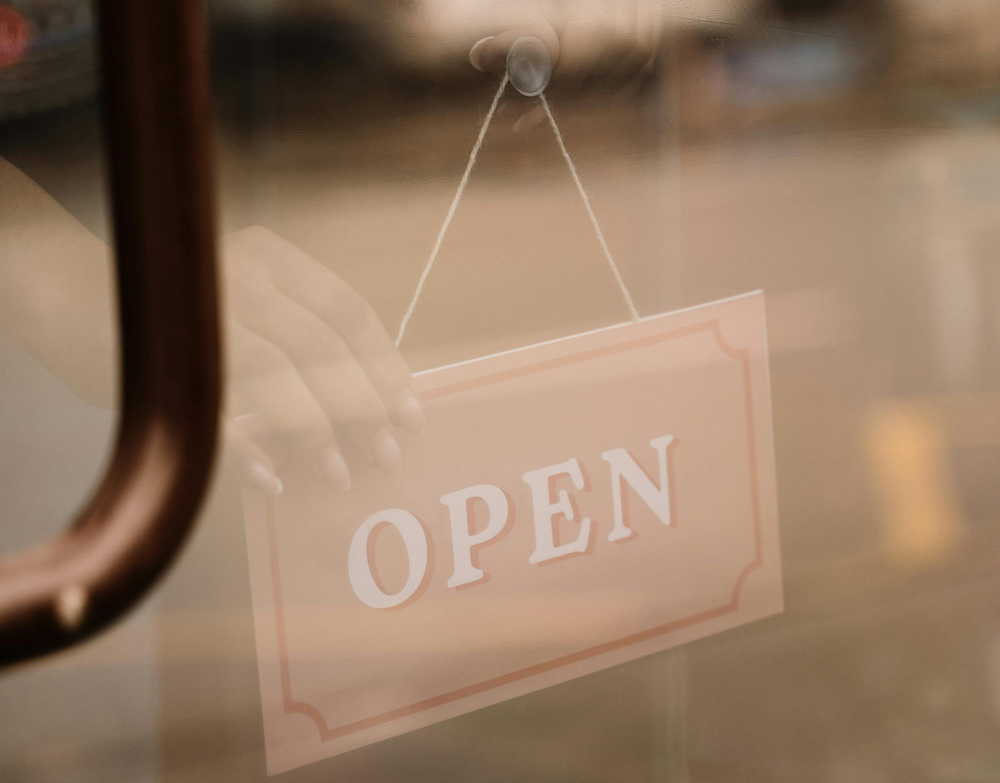
Marketing
Why are reviews important for your retail store?
Reviews guide customers as they make choices, foster trust, and can even give sales a significant lift. If your clothing...
Opening and Closing Procedures Checklists for Your Retail Clothing Store
Business Kick-Starter Guides
+1

All clothing stores need to be consistent and well-organized to do well. Having good opening and closing procedures each day is very important. These routines help your store be ready for customers and safe when it’s closed.
Whether you’re dealing with stock, and money, or making sure everything is in order, using a checklist can help a lot.
In this guide, we’ll look at the key things to do when opening and closing your store to stay efficient and keep it secure all day.
Check out: How to set up the best retail store hours?
Starting and ending tasks are the everyday activities that help a clothing store run well and stay safe. These organized steps include certain tasks staff need to do to get the store ready for shoppers when it opens and to protect the store when it closes.
Using clear checklists for these tasks is important because they:
When workers get to the store, the first thing they do is set the mood for the day. A clear checklist of tasks helps everyone stay focused and makes sure everything is remembered.
Go to your fashion store early so you have time to make sure everything is ready. First, check the outside for any problems like broken windows, litter, or anything strange. This early check helps you fix issues before customers show up.
Go inside your retail clothing store and get the keys you need. Turn off the store’s alarm system to start getting ready for the day. Making sure the alarm is off properly prevents any unwanted interruptions.
Turn on the store’s lights and check important systems like the heating, air conditioning, music, or digital signage. This helps create a nice environment for your customers and employees.
Look at the shelves and product displays to make sure they have enough items and look nice. Add more items if needed, move things around, and make sure special or seasonal items are easy to see.
Walk around the store to check if it’s clean, neat, and not messy. Fix the rocks, fold the clothes, and make sure everything is in the right place.
Open the cash register and count the money to make sure it matches the amount it should have at the start of the day. This helps avoid mistakes when people pay.
Turn on and test the POS system and card readers to confirm they are operational. Ensure the software is updated and ready for transactions to avoid issues during peak hours.
Check the fitting room to make sure everything is clean and tidy. Take away any extra tags, and hangers, and make sure the rooms are ready for customers to use.
Show off new items or special offers by setting up your window display in the store. Bright and interesting displays can help customers notice important products and might make enter your store and them buy things on the spot.
Before starting the day, gather your team for a short meeting. Give everyone their tasks, talk about the day’s goals, and share any important news. This helps everyone work together and start the day well.
Closing your clothing store is as important as opening it. It’s the last step to protect your business and make sure everything is ready for the next day.
Here’s a simple list to help you finish the day quickly and safely.
Go through your items carefully, especially the expensive ones. Count them to make sure they match your sales records from the day. Write down any problems, like missing or broken items, so you can fix them fast. Keep everything neat and fully stocked for the next day.
List any items that are missing, damaged, or need more stock. Keeping good records helps you order the right things and keep your store tidy.
End the day by closing all the cash registers. Count the money and check it against your sales records for the day. Be careful to avoid errors and get the money ready for the bank.
Make daily sales reports and quickly forecast product demand for that day. Find out which products sell the most and where you can do better. This will help you plan for the future and decide what to keep in stock.
Put your money and important papers in a safe place, like a safe or a locked box. This keeps them safe from thieves and protects your money overnight.
Walk around your clothing store to make sure no customers are left inside. Look in fitting rooms, restrooms, and all parts of the store to make sure everything is safe and secure.
Make sure all windows and doors are locked. Take a little extra time to check everything is properly locked to avoid break-ins.
Activate the store’s alarm system to increase safety. Check that the retail security system is working correctly before you leave.
Before leaving, check that all staff members have clocked out and left the store safely. Ensure no one is still inside and that everyone feels safe when leaving.
As the last person to leave, check all locks and security measures again. Only leave after making sure everything is properly secured.
Training your employees well helps them not only know what to do but also why it’s important to do it correctly.
By giving them the right support and resources, you can help your team feel confident and consistent when doing tasks like opening and closing. Here’s how to help them succeed:
Show new employees how to do their daily tasks by doing them together and explaining why each step is important. For example, show how counting money correctly helps avoid mistakes at the end of the day, or how keeping things tidy makes customers happy.
Use tools like Slack or group chats to send reminders about tasks and share updates on how things are done. These tools also help employees ask questions and understand what is expected of them.

Put clear checklists in plastic covers at places like the cash register or storage room to remind workers quickly. Having these guides close by helps employees stay focused, even when they’re very busy.
Managers should look at procedures often to find any mistakes. Give helpful feedback to fix problems and thank employees who follow the checklist carefully.
Using technology instead of paper checklists can make your store work better and be more organized. Here are some ideas of tools that you can use:



Using these tools helps eliminate errors, save time, and keep your store running smoothly.
Here, we’ll provide you with a detailed checklist for opening and closing procedures for your retail clothing store. By following these steps, you can ensure that your store is organized, secure, and ready for a successful day of business.
Use a clear opening and closing checklist easily and helpfully to keep your clothing store neat and safe.
These steps help your team know what to do, avoid problems, and make sure the store is ready for shoppers.
By following these procedures, you’ll make your clothing store run more smoothly, leaving you more time to concentrate on growing your business and giving customers a great experience.
What is dropshipping?